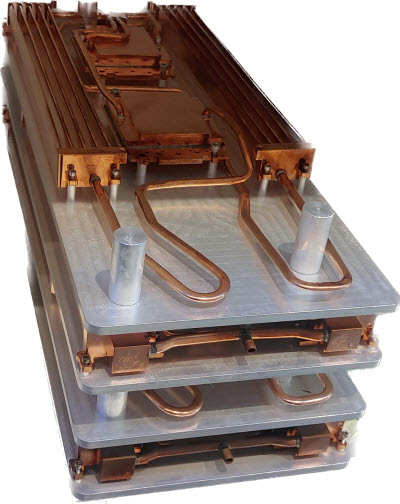69. A Review of Research on Thermal Management of New Energy Vehicles
페이지 정보
작성자 최고관리자 작성일 23-12-01 11:51본문
1) Power battery air cooling
Through the flow of air, the battery pack conducts convective heat exchange with the outside air. Air cooling is generally divided into natural cooling and forced cooling. Natural cooling is when the outside air cools the battery pack when the car is running. Forced air cooling is to install a fan for forced cooling against the battery pack. The advantages of air cooling are low cost and easy commercial application. The disadvantages are low heat dissipation efficiency, large space occupation ratio, and serious noise problems.
2) Power battery liquid cooling
Heat is removed from the battery pack by the flow of liquid. Since the specific heat capacity of liquid is larger than that of air, the cooling effect of liquid cooling is better than that of air cooling, and the cooling speed is also faster than that of air cooling. The temperature distribution after cooling the battery pack is also relatively uniform. Therefore, liquid cooling is also widely used commercially. But liquid cooling also has disadvantages. The disadvantage is that there is a risk of leakage, the complexity is relatively large, and the maintenance cost is high.
3) Phase change material cooling
Phase change materials (PCM) include paraffin, hydrated salts, fatty acids, etc. When a phase change occurs, it can absorb or release a large amount of latent heat while its own temperature remains unchanged. PCM has a large thermal energy storage capacity without additional energy consumption, and is widely used in battery cooling of electronic products such as mobile phones. However, the application of automotive power batteries is still in the research state. Phase-change materials suffer from low thermal conductivity, causing the PCM to melt on the side that contacts the battery. However, other parts are not melted, which reduces the heat transfer performance of the system and is not suitable for large-sized power batteries. If these problems can be solved, PCM cooling will become the most potential development solution for thermal management of new energy vehicles.
Through the flow of air, the battery pack conducts convective heat exchange with the outside air. Air cooling is generally divided into natural cooling and forced cooling. Natural cooling is when the outside air cools the battery pack when the car is running. Forced air cooling is to install a fan for forced cooling against the battery pack. The advantages of air cooling are low cost and easy commercial application. The disadvantages are low heat dissipation efficiency, large space occupation ratio, and serious noise problems.
2) Power battery liquid cooling
Heat is removed from the battery pack by the flow of liquid. Since the specific heat capacity of liquid is larger than that of air, the cooling effect of liquid cooling is better than that of air cooling, and the cooling speed is also faster than that of air cooling. The temperature distribution after cooling the battery pack is also relatively uniform. Therefore, liquid cooling is also widely used commercially. But liquid cooling also has disadvantages. The disadvantage is that there is a risk of leakage, the complexity is relatively large, and the maintenance cost is high.
3) Phase change material cooling
Phase change materials (PCM) include paraffin, hydrated salts, fatty acids, etc. When a phase change occurs, it can absorb or release a large amount of latent heat while its own temperature remains unchanged. PCM has a large thermal energy storage capacity without additional energy consumption, and is widely used in battery cooling of electronic products such as mobile phones. However, the application of automotive power batteries is still in the research state. Phase-change materials suffer from low thermal conductivity, causing the PCM to melt on the side that contacts the battery. However, other parts are not melted, which reduces the heat transfer performance of the system and is not suitable for large-sized power batteries. If these problems can be solved, PCM cooling will become the most potential development solution for thermal management of new energy vehicles.
- 이전글70. New Energy Battery Packing Aluminum Cold Plate 23.12.01
- 다음글68. Heat Pipe With Zipper Fin Heat Sink 23.07.05




